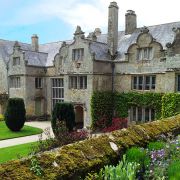Trevelgue Head - Promontory Fort / Cliff Fort
By The Cornwall Guide. Last updated
- Trevelgue Head, also known as Porth Island, is one of Cornwall's finest ancient monuments. Located just outside Newquay, the site contains eight massive earth and stone ramparts, two large early Bronze Age barrows and the foundations of several large and apparently unique roundhouses. In 1939, Trevelgue Head was the site of the first ever extensive examination of an Iron Age coastal settlement. The excavation revealed a wealth of information, although the outbreak of war meant that the results were not published until 1997, when English Heritage funded an analysis of the principle discoveries. The site has a long history, stretching back eight thousand years to the Mesolithic period, although the main phase of activity is associated with the construction of the complex ramparts, which date back to between the sixth and first centuries BC.
- It is thought that the first settlers of Trevelgue Head were members of the Celtic Dumnonii tribe, who would have found a prime site for occupation; iron deposits, nearby woodland and a sheltered harbour go some way towards explaining why Trevelgue Head was so heavily defended.
Important decorative pottery and metal objects have been discovered on the site, many of which are now on display in the Royal Cornwall Museum in Truro. Trevelgue Head is a spectacularly beautiful place - much visited, easily accessible and adjacent to the fine Porth beach. An ongoing programme of conservation was established in 2001 and public information boards were installed in 2007.







